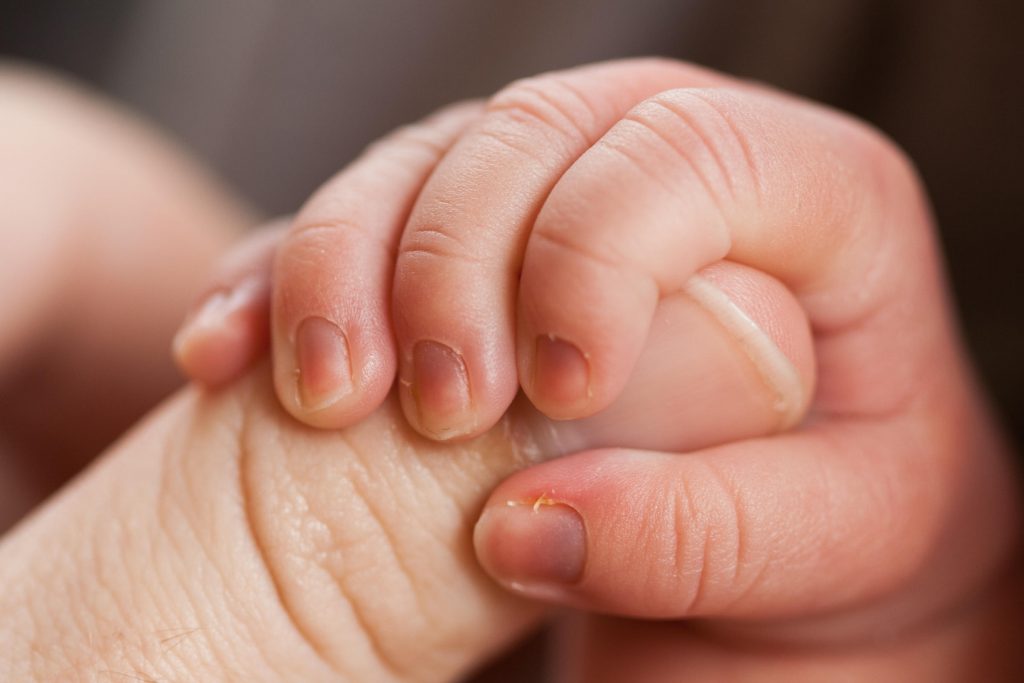Parents are often worried about the safety and well-being of their children. When it comes to newborn babies, the concern gets higher, considering a newborn baby is fragile and prone to more diseases and infections than other age groups of children. Sometimes, infants may develop conditions like circumoral cyanosis, which most parents are unfamiliar with. Read along, To find out more about circumoral cyanosis.
What Is Circumoral Cyanosis?
Mostly the condition of circumoral cyanosis is seen in newborn babies. In this condition, an infant develops a blue tint around the mouth and upper lip area, which looks like discolouration and is a cause of concern for most people. In some cases, the skin on the hands and feet also appears to be blue. Blue skin is often associated with low levels of oxygen in blood vessels.
Categories of Circumoral Cyanosis
Circumoral cyanosis in infants is of mainly two types.
Central cyanosis
Ventilatory problems cause central cyanosis, and in serious cases, it can be caused due to asphyxiation or choking.
As central cyanosis is a Ventilatory problem, it interprets as low amounts of oxygen ratio of blood in the lungs. It becomes a serious issue when the oxygen drops to under 75%. The bluish tint appears on the central part of the body, like the torso, mouth and head. Central cyanosis in infants is not considered normal and often indicates issues in the heart, lungs or blood problems.
Peripheral cyanosis
This type of cyanosis is caused when a blue tint appears on the fingertips or other parts of the body. Peripheral cyanosis is caused due to lack of blood circulation. The condition of peripheral cyanosis occurs when blood that reaches the extremities is not rich in oxygen, leading to blue tips. It is also known as acrocyanosis and is often normal in newborn babies. Children may develop acrocyanosis in conditions where they are exposed to cold.
Causes
- Abnormalities of the heart, lungs or blood can cause cyanosis. Usually, the oxygen-rich blood is delivered from the heart to other body parts. When the blood is returned to the heart, the blue blood with low oxygen levels is then transferred to the lungs to collect more oxygen. If there is any abnormality of the lungs, it can prevent oxygen from entering the blood, hence causing cyanosis.
- In most common cases, acrocyanosis occurs when the child comes in contact with cold conditions like a cold bath. This type of cyanosis often goes away after the baby warms up.
- Congenital abnormalities can also cause cyanosis as they can cause blood to bypass the lungs altogether without ever collecting oxygen.
- Abnormalities in the blood may cause it not to collect and absorb oxygen normally, resulting in blue blood, which is referred to as poor blood, getting pumped up in the body.
Signs And Symptoms
- Discolouration of skin around the mouth, upper lips, and fingertips is common. The appearance of bluish or purple tint Instead of normal skin colour indicates circumoral cyanosis.
- In cases where the child has a dark complexion, look for a bluish tint under nails or the pale colour of the gums.
- Serious Symptoms include rapid breathing, excessive sweating, breathing problems and gasping for air.
Treatment
The treatment for Circumoral cyanosis involves identifying the cause of cyanosis and then correcting the underlying cause so that the restoration of oxygenated blood flow takes place to the affected part of the body.
In children, circumoral cyanosis goes away, usually without any external help. In the case of newborn babies, this happens a few days after birth, and in the case of older children, cyanosis goes away once they get warm. If you see your child displaying symptoms of circumoral cyanosis, warming them up and cuddling them with a blanket can help the blue colour fade easily. It is not a serious issue if the blue colour appears only around the mouth or lips.
In serious cases, certain medications such as diuretics and antibiotics are used to manage the symptoms of circumoral cyanosis. Medications like diuretics help drain out excessive fluids that may have accumulated due to the low circulation of blood in the body. For infections like pneumonia, antibiotics are also prescribed for treating infections caused by cyanosis.
In cases where breathing problems are experienced, the physician first checks the windpipe or the airway for being clear to begin oxygenation. To stabilize breathing, oxygenation is required, and in some cases, a ventilator or a breathing machine might be required to provide relief to the patient.
When To See A Doctor?
You must contact your doctor if your child develops a bluish tint to other parts of the body apart from the mouth and upper lips like
- Fingertips
- Fingernails
- Chest
- Head
- Stomach
- Feet
Visit your health care provider if the bluish tint does not go away even after rubbing your child in a blanket and warming them up. Immediate contact with the doctor is advisable If the baby develops any of the following symptoms like
- Gasping for air
- Shortness of breath
- Excessive sweating.
Doctors evaluate cyanosis through various tests like blood work and scans such as x-rays. This helps them assess the oxygen level present in the blood and hence determine the cause of the cyanosis.
Conclusion
Although cyanosis is rarely a life-threatening medical condition, it is necessary to determine its underlying cause. By doing so, the condition is managed well, and potential complications can be prevented.
Resources:
https://www.ncbi.nlm.nih.gov/books/NBK482247/
https://www.healthline.com/health/circumoral-cyanosis#:~:text=Circumoral%20cyanosis
https://www.cincinnatichildrens.org/health/c/cyanosis
